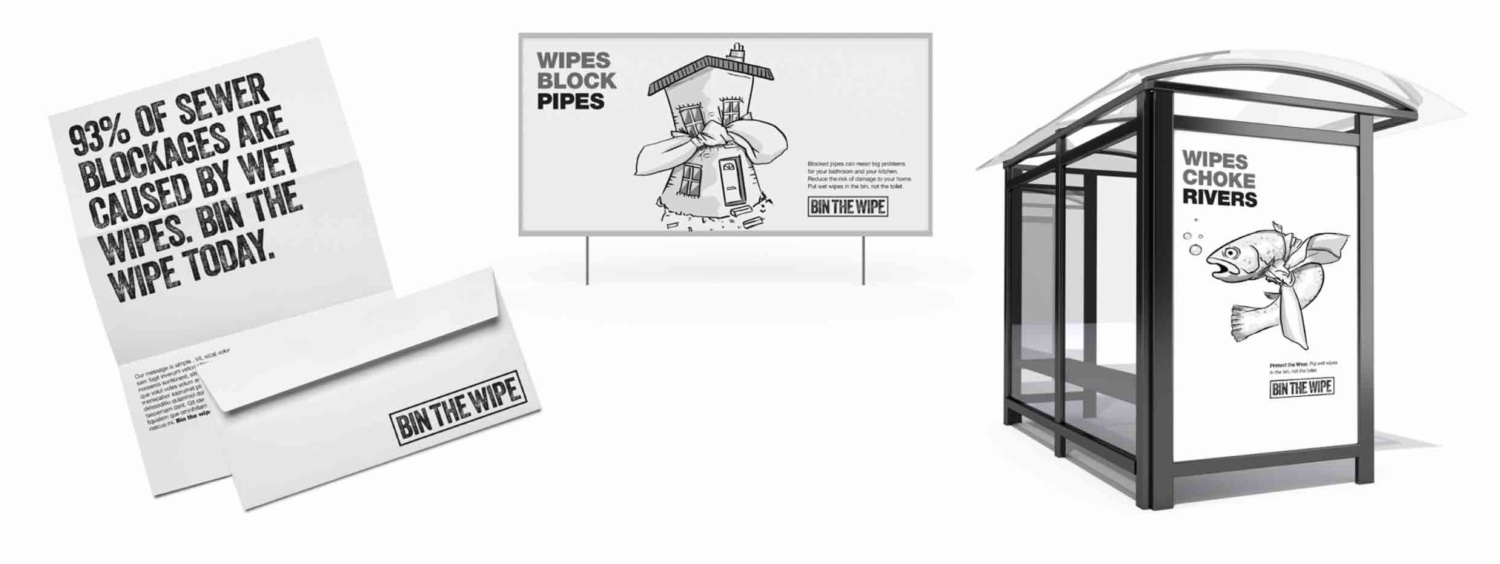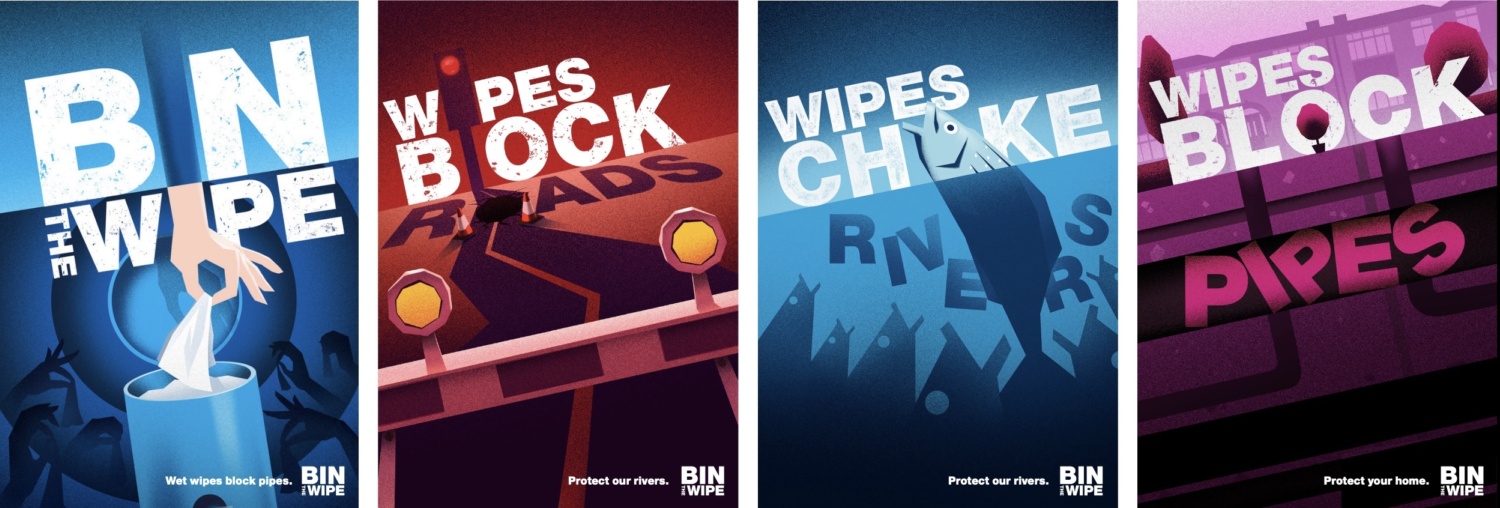Background
We worked with NWG on the tricky problem of wet wipes blocking sewer pipes. It’s a huge issue, costing the water company millions annually, but one that is hard to tackle as the behaviour that leads to blockages happens in the most private room in the house… We developed and piloted two behavioural interventions, one designed to put pressure on people to do the right thing, the other making it easy for them to do it. Results were impressive, with blockages reduced by more than 60% in pilot areas and not dropping below that since.
The Challenge
Wet wipes have become ubiquitous in modern living. No longer just used for babies’ bottoms, wipes are marketed for every possible cleaning use from bicycles to pet paws. Three-quarters of us have them in our homes and the market is now worth £500m and counting. This rise in use has been mirrored by a rise in serious sewer blockages, which cause floods to streets and homes and cost the water industry (and its customers) millions. Fatbergs may grab the headlines, but wipes are now the main cause of blockages.
Despite some awareness of what should and shouldn’t be flushed down the loo, less than half of residents say they “always think twice before putting something down the toilet” – it’s seen by some essentially as an always open bin. What’s flushed disappears, and the potential consequences are easy to put aside (“present bias” at work). This is compounded by a lack of, or unclear, information: some wipes say they’re flushable (even though only a tiny proportion are actually safe to flush), most say nothing. They feel a bit like paper, so it’s easy to assume that one wipe won’t make a difference anyway…

Insight
From NWG’s data, we already knew a lot about what ends up in the sewers, but wanted to know more about why. This is difficult with such a private behaviour but through an analysis of existing evidence and some new quantitative research we were able to challenge some previously held assumptions and unearth some clues:
- The bathroom is the most popular room for keeping wipes
- Removing make up is the top use for wipes, followed by general cleaning of face/hands
- More than half of households don’t have a bin in their bathroom
This insight showed us that our primary role can’t be about trying to stop people using wipes: they are the ultimate convenience product and used in a very habitual way. The opportunity is to focus on getting them to do the right thing in disposal. So we can narrow down the behaviour we need to focus on – the bin is the only place for a used wipe.
Intervention
We ran a two-day behavioural workshop with internal and external stakeholders, community representatives and customers, using behavioural models and tools to help us long-list opportunities for change. We then took forward two areas to develop as interventions:
1. The big bin giveaway
A targeted giveaway of (desirable) bathroom bins to households who didn’t have one.
Designed as a practical solution to make it easy for people to do the right thing and as a catalyst for conversation/media discussion.

2. Blockages as a moment of change
Even the well intentioned can think of times they might flush wipes and families have bigger things to worry about. However, when there is a local sewer blockage/flood, the issue may be much more top of mind.
Designed to capitalise on the clearance of a local blockages to engage households in the area with salient messages about the personal consequences of sewer flooding. Using on-street signage, face to face outreach to households and hard hitting letters to customers in affected areas using visuals of their specific wipes blockages.

Implementation
The two interventions were piloted by NWG in areas identified as hotspots for “wipes activity” in the sewers. We worked with design agency Radley Yeldar to develop a memorable uniting idea “Bin The Wipe” to point all activity to a simple, positive action.

Impact
Street teams were able to give away bins to a third of the households in the pilot area and the activity was well received, with large social media reach. Additionally the moments of change activity was extremely cost effective, with only a handful of homes needing more than one letter. Both interventions achieved impressive changes in behaviour and are now being scaled across the region more broadly.
Both interventions resulted in large decreases in flushed wipes of over 60%
Since the initial trial, the results have been just as impressive: in the moments of change pilot areas, blockages have never dropped back below the initial 60% reduction level and have at times been as high as 80% lower than pre-intervention. Moments of change has so far been rolled out to 40 hotspot areas, covering more than 170,000 homes.